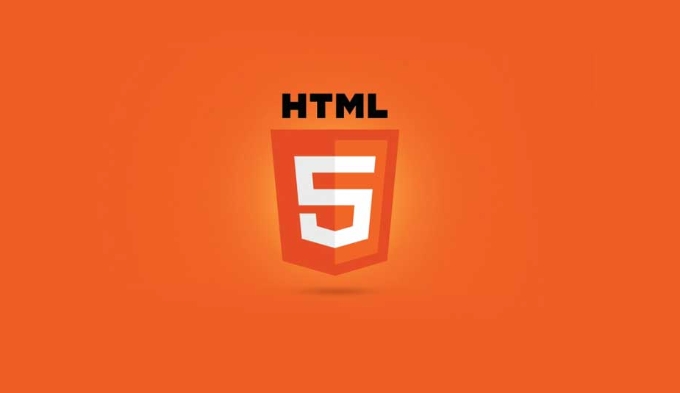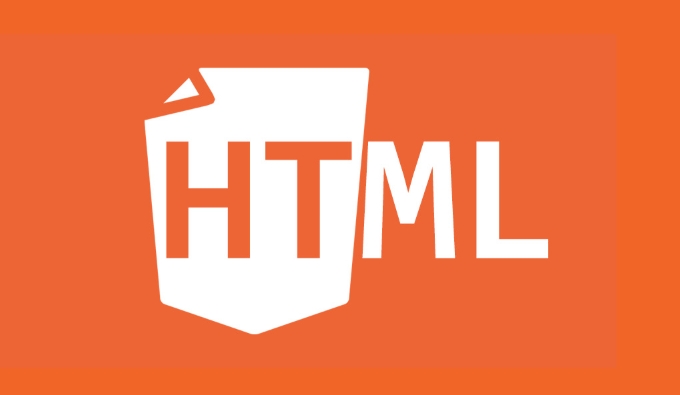 <p> The slotting and composition of H5 Web Components are two very critical concepts when building reusable components. They determine how content is inserted inside components and how components work together. If you encounter problems with incorrect content display and confusing slot nesting when developing custom components, it is likely that you do not understand these two points well.
<p> The slotting and composition of H5 Web Components are two very critical concepts when building reusable components. They determine how content is inserted inside components and how components work together. If you encounter problems with incorrect content display and confusing slot nesting when developing custom components, it is likely that you do not understand these two points well.

What is Slot? Basic usage method
<p> Slot is a mechanism used for content distribution in Web Components. You can think of it as a "reserved location" that allows you to pass in HTML content when using components and it is up to the components to decide where the content appears. <p> The simplest example is this:
<my-card> <p>This is the slot content</p> </my-card><p> And there is a
<slot></slot> in the my-card component template, and the above <p> will be inserted into that position.<p> By default, a slot without a name attribute is called a "default slot". If you want to insert multiple different content blocks, you can use named slots: 
<my-card> <h2 slot="title">Title</h2> <p>Body Content</p> </my-card><p> Corresponding component templates:
<slot name="title"></slot> <div class="content"> <slot></slot> </div>
Slot fallback content and scope issues
<p> Slots support fallback content, that is, the default content displayed when the user does not provide slot content:<slot>Default text</slot><p> This is useful when designing components, such as button components can come with text but allow external replacement.<p> It should be noted that the scope of the slot content belongs to the parent context , not inside the component. This means you cannot directly access the state or method inside the component in the slot.<p> For example, the following writing method will not take effect:
<!-- Parent component-->
<my-component>
<p>{{ internalData }}</p> <!-- internalData is my-component internal variable-->
</my-component><p> Because the slot content is rendered under the scope of the parent component, the data of the child component cannot be accessed.
Composition: Design concept that combination is better than inheritance
<p> Web Components advocates the design concept of "combination is better than inheritance". That is, we tend to assemble multiple components together through slots rather than extending functionality through class inheritance. <p> For example, a dialog component can accept titles, contents, and action buttons as slots, rather than creating subclasses for each dialog. <p> The benefits of this practice include:- Higher flexibility
- Easier to maintain and test
- No dependency on complex inheritance chains
Usage tips and common pitfalls
- Be careful when nesting multi-layer slots : Sometimes you will use component B in component A, and B contains slots. At this time, you need to pay special attention to the transfer logic of the slot content.
- Don't abuse slots : Not everything is suitable for slot processing. Some structures are more suitable for property control.
- Pay attention to the update mechanism for dynamic slot content : If you use Web Components in frameworks like Vue or React, pay attention to whether the slot content is updated responsively.
- Check browser compatibility : Although mainstream browsers support slot, they may perform abnormally in some old environments, especially IE11 and below.
The above is the detailed content of H5 Web Components Slotting and Composition. For more information, please follow other related articles on the PHP Chinese website!

Hot AI Tools

Undress AI Tool
Undress images for free

Undresser.AI Undress
AI-powered app for creating realistic nude photos

AI Clothes Remover
Online AI tool for removing clothes from photos.

Clothoff.io
AI clothes remover

Video Face Swap
Swap faces in any video effortlessly with our completely free AI face swap tool!

Hot Article

Hot Tools

Notepad++7.3.1
Easy-to-use and free code editor

SublimeText3 Chinese version
Chinese version, very easy to use

Zend Studio 13.0.1
Powerful PHP integrated development environment

Dreamweaver CS6
Visual web development tools

SublimeText3 Mac version
God-level code editing software (SublimeText3)

Hot Topics
 Audio and Video: HTML5 VS Youtube Embedding
Jun 19, 2025 am 12:51 AM
Audio and Video: HTML5 VS Youtube Embedding
Jun 19, 2025 am 12:51 AM
HTML5isbetterforcontrolandcustomization,whileYouTubeisbetterforeaseandperformance.1)HTML5allowsfortailoreduserexperiencesbutrequiresmanagingcodecsandcompatibility.2)YouTubeofferssimpleembeddingwithoptimizedperformancebutlimitscontroloverappearanceand
 Adding drag and drop functionality using the HTML5 Drag and Drop API.
Jul 05, 2025 am 02:43 AM
Adding drag and drop functionality using the HTML5 Drag and Drop API.
Jul 05, 2025 am 02:43 AM
The way to add drag and drop functionality to a web page is to use HTML5's DragandDrop API, which is natively supported without additional libraries. The specific steps are as follows: 1. Set the element draggable="true" to enable drag; 2. Listen to dragstart, dragover, drop and dragend events; 3. Set data in dragstart, block default behavior in dragover, and handle logic in drop. In addition, element movement can be achieved through appendChild and file upload can be achieved through e.dataTransfer.files. Note: preventDefault must be called
 What is the purpose of the input type='range'?
Jun 23, 2025 am 12:17 AM
What is the purpose of the input type='range'?
Jun 23, 2025 am 12:17 AM
inputtype="range" is used to create a slider control, allowing the user to select a value from a predefined range. 1. It is mainly suitable for scenes where values ??need to be selected intuitively, such as adjusting volume, brightness or scoring systems; 2. The basic structure includes min, max and step attributes, which set the minimum value, maximum value and step size respectively; 3. This value can be obtained and used in real time through JavaScript to improve the interactive experience; 4. It is recommended to display the current value and pay attention to accessibility and browser compatibility issues when using it.
 How can you animate an SVG with CSS?
Jun 30, 2025 am 02:06 AM
How can you animate an SVG with CSS?
Jun 30, 2025 am 02:06 AM
AnimatingSVGwithCSSispossibleusingkeyframesforbasicanimationsandtransitionsforinteractiveeffects.1.Use@keyframestodefineanimationstagesforpropertieslikescale,opacity,andcolor.2.ApplytheanimationtoSVGelementssuchas,,orviaCSSclasses.3.Forhoverorstate-b
 HTML audio and video: Examples
Jun 19, 2025 am 12:54 AM
HTML audio and video: Examples
Jun 19, 2025 am 12:54 AM
Audio and video elements in HTML can improve the dynamics and user experience of web pages. 1. Embed audio files using elements and realize automatic and loop playback of background music through autoplay and loop properties. 2. Use elements to embed video files, set width and height and controls properties, and provide multiple formats to ensure browser compatibility.
 What is WebRTC and what are its main use cases?
Jun 24, 2025 am 12:47 AM
What is WebRTC and what are its main use cases?
Jun 24, 2025 am 12:47 AM
WebRTC is a free, open source technology that supports real-time communication between browsers and devices. It realizes audio and video capture, encoding and point-to-point transmission through built-in API, without plug-ins. Its working principle includes: 1. The browser captures audio and video input; 2. The data is encoded and transmitted directly to another browser through a security protocol; 3. The signaling server assists in the initial connection but does not participate in media transmission; 4. The connection is established to achieve low-latency direct communication. The main application scenarios are: 1. Video conferencing (such as GoogleMeet, Jitsi); 2. Customer service voice/video chat; 3. Online games and collaborative applications; 4. IoT and real-time monitoring. Its advantages are cross-platform compatibility, no download required, default encryption and low latency, suitable for point-to-point communication
 How to check if a browser can play a specific video format?
Jun 28, 2025 am 02:06 AM
How to check if a browser can play a specific video format?
Jun 28, 2025 am 02:06 AM
To confirm whether the browser can play a specific video format, you can follow the following steps: 1. Check the browser's official documents or CanIuse website to understand the supported formats, such as Chrome supports MP4, WebM, etc., Safari mainly supports MP4; 2. Use HTML5 tag local test to load the video file to see if it can play normally; 3. Upload files with online tools such as VideoJSTechInsights or BrowserStackLive for cross-platform detection. When testing, you need to pay attention to the impact of the encoded version, and you cannot rely solely on the file suffix name to judge compatibility.
 How to create animations on a canvas using requestAnimationFrame()?
Jun 22, 2025 am 12:52 AM
How to create animations on a canvas using requestAnimationFrame()?
Jun 22, 2025 am 12:52 AM
The key to using requestAnimationFrame() to achieve smooth animation on HTMLCanvas is to understand its operating mechanism and cooperate with Canvas' drawing process. 1. requestAnimationFrame() is an API designed for animation by the browser. It can be synchronized with the screen refresh rate, avoid lag or tear, and is more efficient than setTimeout or setInterval; 2. The animation infrastructure includes preparing canvas elements, obtaining context, and defining the main loop function animate(), where the canvas is cleared and the next frame is requested for continuous redrawing; 3. To achieve dynamic effects, state variables, such as the coordinates of small balls, are updated in each frame, thereby forming






